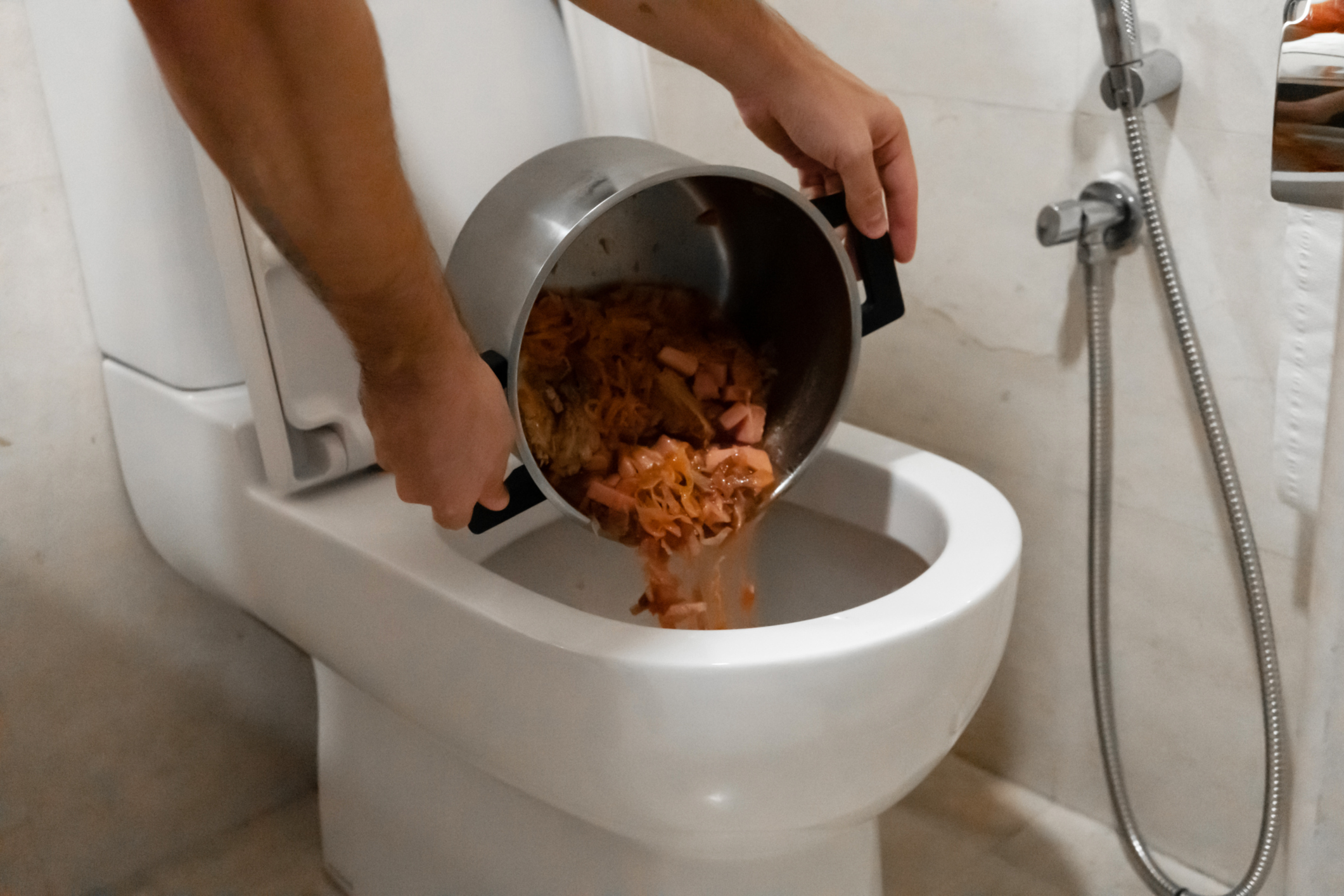Do you find yourself searching for know-how involving Flushing Food Down the Toilet??

Introduction
Many individuals are typically faced with the dilemma of what to do with food waste, specifically when it pertains to leftovers or scraps. One common question that arises is whether it's all right to flush food down the commode. In this post, we'll delve into the reasons that people might take into consideration flushing food, the effects of doing so, and alternate approaches for proper disposal.
Reasons why people could consider flushing food
Absence of awareness
Some individuals might not recognize the prospective damage triggered by flushing food down the commode. They might incorrectly think that it's a harmless technique.
Benefit
Purging food down the toilet may appear like a fast and very easy solution to throwing away undesirable scraps, specifically when there's no neighboring trash can offered.
Negligence
In some cases, people might merely select to flush food out of sheer laziness, without considering the effects of their activities.
Consequences of flushing food down the toilet
Environmental impact
Food waste that winds up in waterways can contribute to air pollution and harm marine ecological communities. Furthermore, the water made use of to purge food can strain water resources.
Pipes issues
Purging food can cause clogged pipes and drains pipes, creating costly pipes repair work and inconveniences.
Kinds of food that need to not be flushed
Fibrous foods
Foods with coarse appearances such as celery or corn husks can get entangled in pipelines and cause clogs.
Starchy foods
Starchy foods like pasta and rice can take in water and swell, bring about clogs in pipes.
Oils and fats
Greasy foods like bacon or cooking oils should never be flushed down the commode as they can strengthen and create clogs.
Correct disposal approaches for food waste
Making use of a waste disposal unit
For homes furnished with waste disposal unit, food scraps can be ground up and purged with the plumbing system. However, not all foods are suitable for disposal in this manner.
Recycling
Certain food product packaging products can be recycled, reducing waste and decreasing environmental impact.
Composting
Composting is an eco-friendly method to deal with food waste. Organic products can be composted and made use of to improve soil for horticulture.
The significance of proper waste administration
Reducing ecological injury
Appropriate waste management methods, such as composting and recycling, aid reduce contamination and maintain natural resources for future generations.
Securing pipes systems
By avoiding the practice of flushing food down the bathroom, house owners can protect against costly pipes fixings and keep the honesty of their pipes systems.
Conclusion
In conclusion, while it may be alluring to purge food down the commode for ease, it's important to understand the potential repercussions of this action. By adopting correct waste monitoring methods and taking care of food waste properly, individuals can add to much healthier plumbing systems and a cleaner setting for all.
FLUSH FOOD DOWN THE TOILET?
FLUSHING FOOD CAN CAUSE BLOCKED DRAINS IN YOUR HOME
All of the plumbing fixtures in your home are connected to the same sewer pipe outside of your home. This outdoor sewer pipe is responsible for transporting all the wastewater from your home to the Council sewer mains. Even small pieces of food that go down the kitchen sink can cause problems for your sewer. It should therefore be obvious that flushing larger bits of food, such as meat, risks a clog in either the toilet itself or the sewer pipes. Flushing greasy food is even more problematic because oil coagulates when it cools, coating the interior lining of your pipes.
THE TOILET IS NOT A BIN
Food isn’t the only thing that people shouldn’t be flushing down the toilet. People use the toilet to dispose of all kinds of things such as tampons, makeup wipes, dental floss, kitty litter and even underwear. Water goes to great lengths to educate residents about the high costs and stress placed on wastewater treatment systems simply from people flushing the wrong stuff down the toilet. It costs taxpayers millions of dollars each year, and homeowners thousands in blocked drain repairs.
FLUSHING FOOD IS A WASTE OF WATER
Flushing food is a waste of our most precious resource - water. In June this year Level 1 water restrictions were introduced to protect water supply from drought conditions. Much of New South Wales continues to be affected by prolonged drought with recent figures revealing up to 97 per cent of the state remains in drought. Depending on whether you have a single or dual flush toilet, every single flush uses between five and 11 litres of water. In the current climate this is a huge amount of water to be wasting on flushing food that should be placed in the bin (or better yet, the compost).
https://www.jabplumbingsolutions.com.au/blog/can-you-flush-food-down-the-toilet

Hopefully you enjoyed our piece on What Can Happen If You Flush Food Down the Toilet?. Thanks a ton for taking the time to browse our piece. Feel free to take a moment to share this write-up if you enjoyed it. I praise you for your time. Don't hesitate to check our site back soon.
Schedule Service Pickup